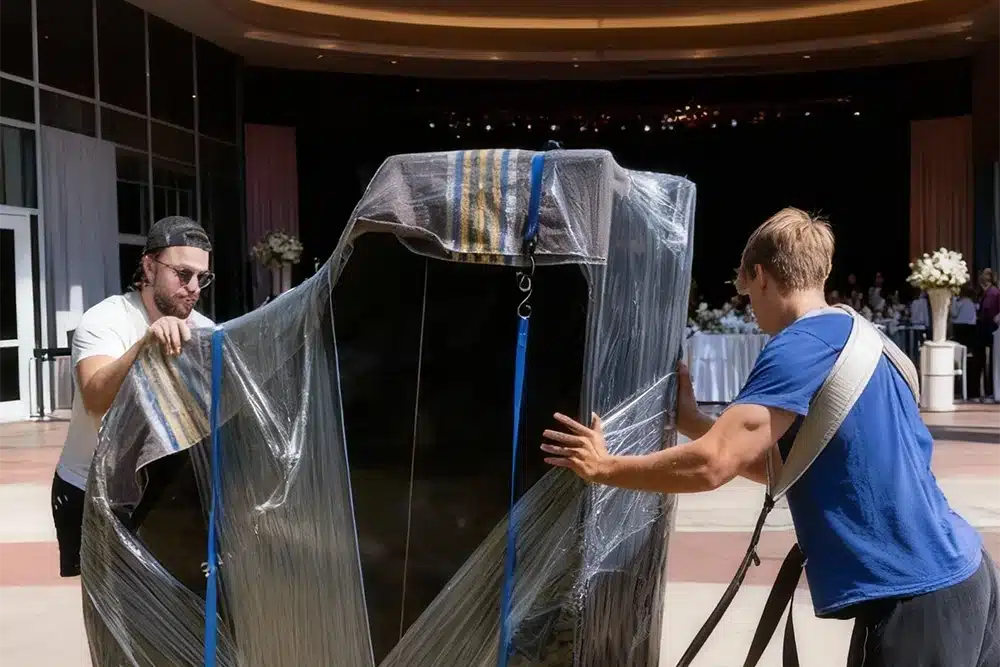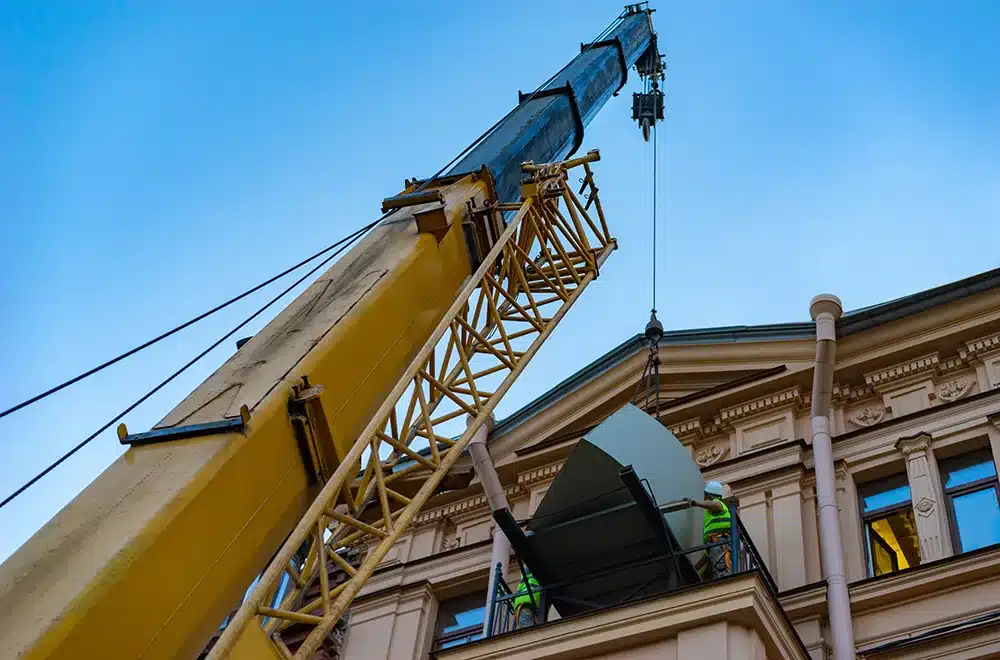When planning a special event like a wedding, concert, recital, or even a pop-up performance, there’s nothing quite like the sound and presence of a piano. But moving a piano to an outdoor venue is no small task. It’s an art in itself that requires strategy, care, and experience. Unlike ordinary moves, this one comes with unique challenges: unpredictable weather, uneven terrain, limited access, and the ever-present risk of damaging your instrument or throwing it out of tune. This guide walks you through everything you need to know to move, protect, and set up a piano for outdoor events safely and efficiently. Whether you’re hosting an elegant garden wedding or a large-scale concert, these steps and the expertise of professional event piano movers can make all the difference.
Challenges of Outdoor Piano Moves for Events
Outdoor settings are beautiful, but they bring unique challenges that can easily damage a piano if not handled correctly. Houston’s weather can shift from sunshine to showers in minutes. Pianos, especially those made from layered wood and felt, are particularly sensitive to changes in humidity, rain, and temperature. Moisture can warp soundboards, while heat can cause glue to dry out or keys to stick. Even brief exposure to direct sunlight may lead to tuning instability. Unlike indoor floors, outdoor grounds are often uneven and rarely firm. Grass, gravel, and portable stages can make a 700-pound piano unstable or difficult to balance. Without the right stabilizers or platforms, the instrument may shift during the event, posing risks to both the piano and performers.
Moving a piano to an outdoor venue often presents obstacles such as narrow gates, long pathways, or soft lawns that make the process more difficult. Getting a large piano across such terrain requires careful coordination, specialized dollies, and sometimes custom ramps to prevent sinking or tipping. Even with proper care, moving a piano can slightly alter its pitch, and outdoor conditions tend to amplify these effects. Most pianos need a quick tune-up once they’re set up in their new environment. For grand pianos, reassembling the legs, pedals, and lid safely on location is another task best left to professional event piano movers.
Step-by-Step: How to Prepare and Move a Piano for an Outdoor Event
Successful piano moving for events starts with thorough preparation. Every stage matters, from inspecting the location to timing delivery and ensuring the piano performs flawlessly when it matters most.
1. Inspect the Venue Ahead of Time
Before anything else, visit the site. Check for obstacles such as stairs, narrow paths, or uneven ground that could complicate transport. Assess whether the surface is solid enough to support the piano’s weight — wet grass or soft soil can cause the instrument to sink. Also, confirm where the moving truck can park. If possible, there should be a clear, level path from the truck to the performance area. Sharing this information with your event piano movers ahead of time helps them prepare with the right equipment and crew size.
2. Use Proper Packing and Protection
Because outdoor venues expose instruments to unpredictable conditions, packing is essential. Movers wrap every piano in thick, padded blankets to prevent scratches and absorb shock during transit. They also apply weatherproof coverings such as tarps to guard against moisture or sudden drizzles. Special care goes into protecting the piano’s legs, pedals, and lid, as these delicate parts can easily snap or loosen if mishandled. Grand pianos are usually moved with their legs and lyre removed, while uprights are fully wrapped and strapped to dollies. These precautions not only protect the finish but also maintain internal stability during transport.
3. Use Climate-Controlled Transport
Pianos are highly sensitive to temperature fluctuations. That’s why professional movers often rely on climate-controlled trucks, especially when dealing with Houston’s intense heat and humidity. Inside these vehicles, temperature and humidity remain stable, reducing the risk of soundboard cracks or key swelling. Movers also plan their route and timing carefully. They’ll park the truck as close as possible to the stage or venue access point to shorten exposure time. Every minute a piano spends in direct sunlight or warm air increases the chance of tuning issues, so efficiency is vital.
4. Coordinate Delivery Timing Closely
When you’re moving a piano to an outdoor venue, timing is crucial. The best practice is to schedule delivery early in the morning, before the heat peaks. This gives the piano time to settle and the tuner time to make final adjustments before guests arrive. Ask your movers to remain on-site until setup is complete. Outdoor events often require repositioning due to lighting, audience layout, or sound checks. Having the movers nearby ensures any adjustments can be handled safely and quickly.
What Happens After the Piano Arrives
Once the piano reaches its destination, it shouldn’t be played right away. The instrument needs time to rest and acclimate to the new environment. Moving it from a cool truck into warm outdoor air causes the wood and metal parts to expand at different rates. Rushing this step can lead to tonal instability or even internal damage. After an hour or two of acclimation, a technician may perform an on-site tuning to restore accurate pitch. This step is especially important for recitals or performances where tonal precision is critical.
Before anyone begins playing, movers perform safety checks to ensure the legs are secure, pedals reattached, and the piano is stable on its surface. Throughout the event, it’s wise to keep the piano shaded under a canopy or tent. If weather conditions start to change, movers can re-wrap the piano immediately to protect it from rain, wind, or humidity. Once the event ends, the piano should be promptly moved back indoors or into a temperature-controlled vehicle.
When to Hire Professional Piano Movers for Outdoor Events
Outdoor piano moving for events might seem manageable at first, but the risks and logistics involved make hiring professionals the smartest choice. For high-value, antique, or grand pianos, specialized care is essential. These instruments have intricate mechanics and finishes that can easily be damaged by improper lifting, vibration, or exposure. Movers trained in piano transport know exactly how to secure each part and balance the weight evenly.
If your event involves tight schedules or tricky access points, such as rooftop terraces, parks, or private gardens, professional movers can coordinate every detail. They come equipped with ramps, dollies, protective padding, lifting straps, and weather-resistant gear. Most importantly, they have the manpower and experience to prevent accidents, scratches, or costly damage.
Partnering with experienced event piano movers not only safeguards your instrument but also saves you time and stress. You can focus on the performance while experts handle everything from transportation to setup.
Request a Quote from Houston’s Piano Event Experts today.
FAQs: Piano Moving for Outdoor Events
Can a grand piano be used outside for a wedding?
Yes, but it must be handled with extreme care. A grand piano can be used outdoors as long as it’s protected from direct sunlight, rain, and high humidity. Professional movers can help set up canopies or stage coverings to preserve both the piano’s sound and appearance.
How do you protect a piano from heat or rain at an event?
Use heavy-duty tarps, waterproof wraps, and shade structures. Keep the piano covered when not in use, and avoid placing it on hot or uneven surfaces. Climate-controlled transport and quick re-wrapping after performances also help reduce exposure to the elements.
Will the piano go out of tune after being outside?
Most likely, yes, especially if it’s exposed to humidity or temperature swings. A professional tuner can adjust it before and after the event to restore proper tone. The longer it remains outdoors, the more noticeable the tuning shift may become.
Can movers help reposition the piano mid-event?
Absolutely. Professional event piano movers often stay on-site during events to handle repositioning, photo setups, or stage adjustments. They’ll move the instrument carefully to avoid damage or disruption.
Should I rent or use my own piano for outdoor events?
If your piano is valuable or vintage, renting is generally safer. However, professional movers can also handle your personal piano with great care if you prefer using your own instrument for sentimental or performance reasons.
Related Posts

How to Handle Moving a Piano to an Outdoor Venue for Events

How Professional Piano Movers Use Cranes and Specialized Equipment
